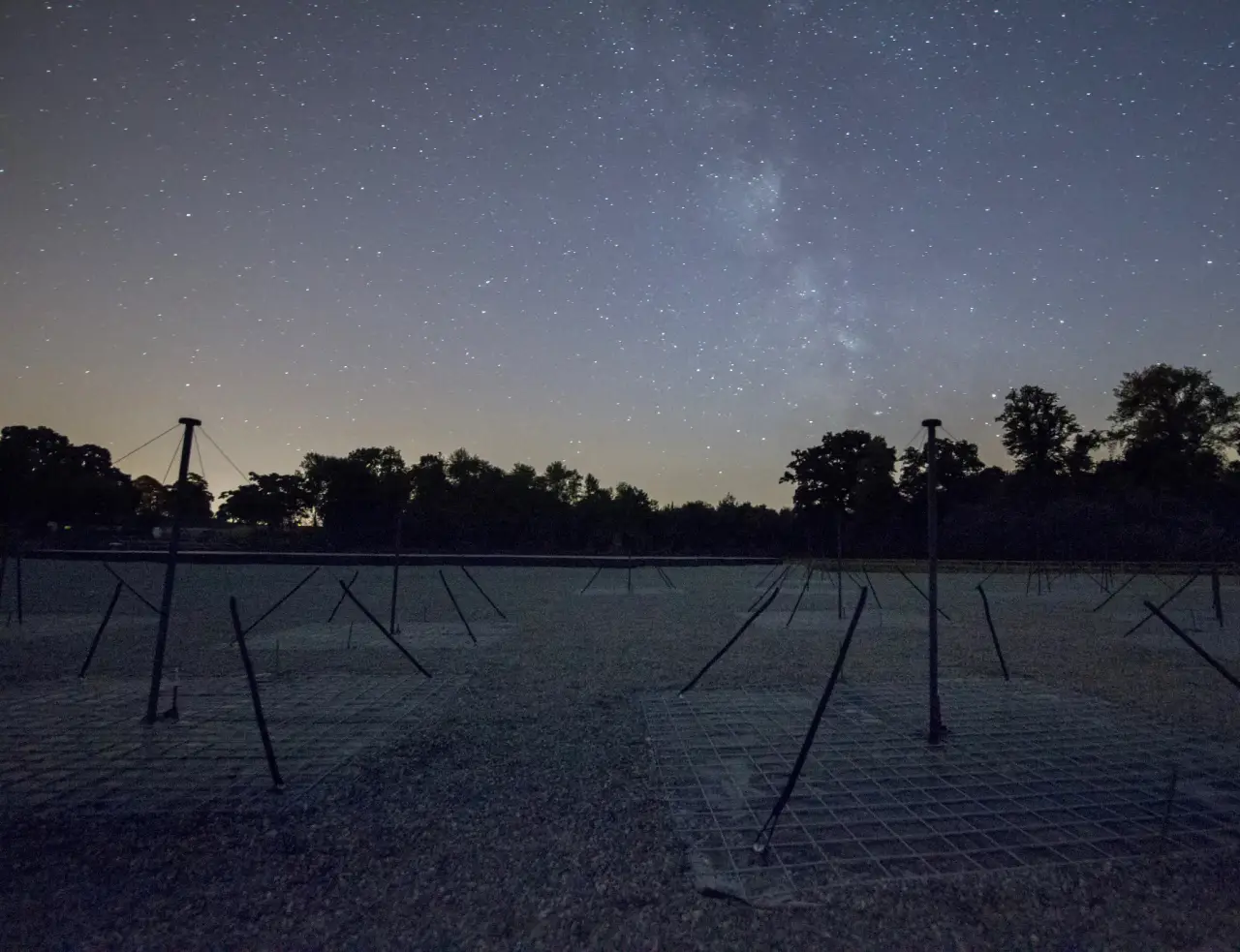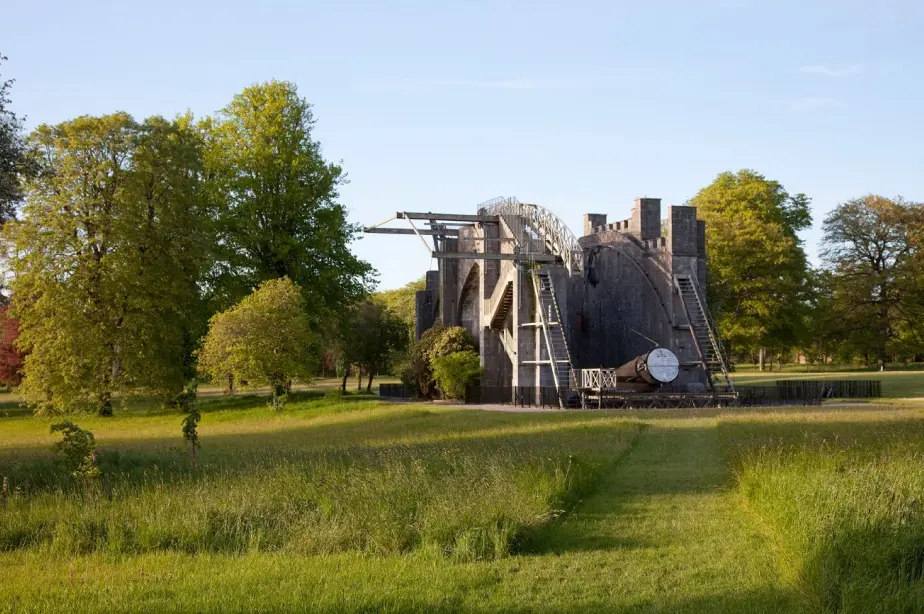Rosse Observatory
Welcome to the Rosse Observatory, operated by Trinity College Dublin and the Dublin Institute for Advanced Studies. The observatory is dedicated to studying radio emission from astronomical objects such as the Sun, pulsars other variable sources. It is located in the radio quiet environment of the demesne.
I-LOFAR
Welcome to I-LOFAR (Irish Low Frequency Array), a very exciting project here at Birr Castle Demesne. Following the award of 1.4 million from Science Foundation Ireland to Trinity College, Trinity have built a cutting-edge radio telescope here on the demesne. I-LOFAR will connect Ireland to the international LOFAR telescope. This site is the perfect location for such a project following on in the spectacular shadows of the “Leviathan” otherwise known as the Great Telescope which was built at Birr Castle back in 1845 and the Leviathan remained that largest telescope in the world for 70 years.
For more information on I-LOFAR project please visit www.lofar.ie a project run by Trinity College Dublin.



World Heritage Aspirations
The Astronomical Observatories of Ireland unites the historic observatories of Armagh, Birr, and Dunsink—three remarkable sites whose astronomical heritage stretches back to the Georgian era. Each remains an active centre for scientific research, education, and public engagement, with original telescopes and instruments still largely in place. Their legacy includes world-leading achievements such as Birr Castle’s Leviathan telescope, Armagh’s long-running observational records, and Dunsink’s association with mathematician William Rowan Hamilton.
On 18 April 2025, these observatories were officially added to Ireland’s UNESCO World Heritage Tentative List—a major milestone that recognises their outstanding universal value and begins the formal process toward full World Heritage designation. This recognition underscores the importance of protecting their unique scientific, cultural, and historical contributions. The next step involves preparing a detailed nomination and conservation plan, ensuring that these living observatories are preserved, celebrated, and sustained for future generations.

Birr Castle Demesne
Birr Castle Demesne began as a private observatory of the 3rd Earl of Rosse, set in the grounds of his castle. It is most famous for the Great Leviathan of Parsonstown, he built in 1845, then the largest telescope in the world. Today, Birr also hosts one of the sites of the LOFAR radio telescope that is distributed across Europe.
Explore More
DIAS Dunsink Observatory
DIAS Dunsink Observatory, on the edge of Dublin, is the oldest of these three, established in 1785 by the Provost of Trinity College Dublin, Francis Andrews. It now forms a part of the School of Cosmic Physics in the Dublin Institute of Advanced Studies (DIAS).
Explore More
Armagh Observatory
Armagh Observatory followed in 1790, with a bequest from Archbishop Richard Robinson, the Primate of All Ireland for the Church of Ireland, together with an Act of Parliament he arranged for, to found “an observatory and museum in Armagh for ever”. The Observatory has operated continuously ever since, now part of the Armagh Observatory and Planetarium.
Explore More